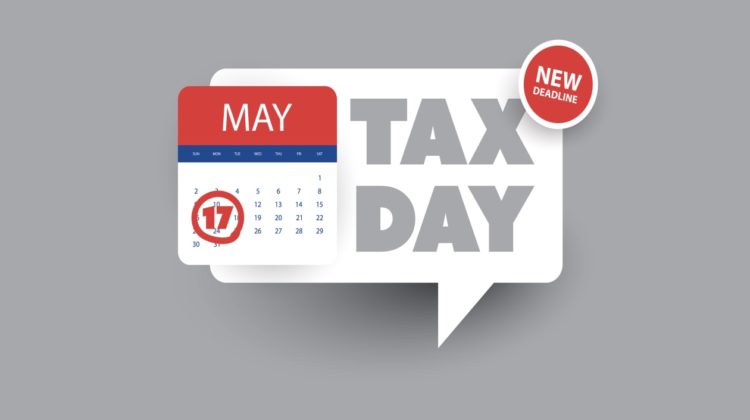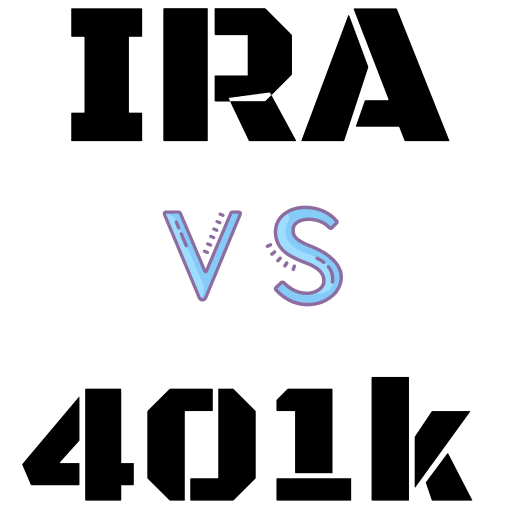
Time is running out if you haven’t filed your 2020 federal tax return yet. While this year’s “Tax Day” was pushed back from April 15 to May 17 to give people more time to file a Form 1040, the day of reckoning is almost here. But filing your federal tax return isn’t the only thing you should be thinking about on May 17 – tomorrow is an important date on this year’s tax calendar for plenty of other reasons, too.
You might want to take some action today or tomorrow if you’re saving for retirement or college, have a health savings account, or employ a nanny. There are other reasons why you might have a tax-related deadline tomorrow, too. And, of course, overlooking a due date could cost you money – either in additional taxes, penalties, or interest. So, as a quick reminder, here are 9 tax deadlines for May 17 that you don’t want to miss. Check them out to see if something unexpected applies to you.
Of course, the biggest due date on the tax calendar each year is the one for your federal personal income tax return. Like most of the deadlines on our list, it usually falls on April 15 but was pushed back to May 17 in 2021 because of COVID-19 concerns. (Last year, the due date was pushed back to July 15 for the same reason.) This year, you must file your return for the 2020 tax year – in other words, for the income you received from January 1 to December 31, 2020 (unless you’re a fiscal-year filer, which is rare).
Use Form 1040 and the related schedules to report your 2020 income, adjustments, and credits. We recommend filing your return electronically – as opposed to using a paper form and mailing it in – because the return will be processed much faster. This is especially true this year, since the IRS is dealing with a large backlog of returns. If you’re getting a tax refund, you’ll also get your money much faster if you e-file your return. Opting for direct deposit over a paper check will speed up your refund, too.
For do-it-yourselfers looking for an online tax software program that gives you a lot of bang for the buck, check out Kiplinger’s Best Values in Tax Software for 2021 to see which products offer the best overall value. If you’re looking for a professional to handle your return, see our 5 Tips for Finding a Tax Preparer.
If you can’t file your income tax return on time, you can get an extension until October 15. However, to get the extension, you have to request it before midnight tomorrow. To make the request, either file Form 4868 or make an electronic tax payment.
Just remember that the extension to file your return doesn’t extend the time to pay your tax. You still have to estimate the amount of tax you’ll owe and pay your tax bill by May 17. If you don’t, the IRS will charge you interest on the unpaid balance and tack on additional late-payment penalties.
For more information, including extension details for Americans living abroad and people serving in a combat zone, see How to Get More Time to File Your Tax Return.
If you want to put more money in an IRA and have it count towards 2020 contributions, you have until tomorrow to make that move. (Normally, you have until the tax return filing deadline for the year – typically April 15 – to make contributions for any given year.) For 2020, you can sock away up to $6,000 in an IRA – $7,000 if you’re age 50 or older.
If you haven’t already maxed out your 2020 IRA contributions, doing so before the May 17 deadline can be a smart move. First, contributions to a traditional IRA are often tax deductible, while withdrawals from a Roth IRA are tax-free. So, whether you contribute to a traditional or a Roth IRA, you can cut your tax bill now or in the future.
Low- and moderate-income people who contribute to an IRA might also qualify for the Saver’s Credit, which can be worth as much as $1,000 ($2,000 for joint filers).
If you contribute to an IRA for 2020 by the May 17 deadline, you can claim the IRA deduction and/or the Saver’s Credit on your 2020 tax return. That means you can get the tax benefits immediately, instead of waiting until next year if you were to contribute the same amount on May 18 or later.
Also note that you have until May 17 to withdraw any excess 2020 contributions to your IRAs (if you didn’t request a filing extension). So, if you put in more than the $6,000 limit ($7,000 if you’re 50 or older), take it out now to avoid stiff penalties.
Self-employed people saving for retirement have until May 17 to put money away in a Solo 401(k) plan or Simplified Employee Pension (SEP) IRA for 2020. If they request a tax return filing extension, the deadline shifts to October 15.
For 2020, a self-employed person can contribute up to $57,000 to a Solo 401(k) – $63,500 if he or she is age 50 or older. (Those amounts go up to $58,000 and $64,500, respectively, for 2021.) These amounts are so high because you can make contributions as both an employee and an employer, although tomorrow’s deadline only applies to the “employer contributions.”
The SEP IRA contribution limit for 2020 is $57,000 ($58,000 for 2021). Only the employer can contribute to a SEP IRA, and whatever percentage of compensation employers set aside in the plan for themselves is the same percentage of pay they must contribute for each eligible employee.
Contributions to both Solo 401(k)s and SEP IRAs are deductible – at least to a point. Contributions made to a Solo 401(k) as an employer are deductible business expenses. However, the deduction can’t be more than 25% of the compensation paid (or accrued) during the year to eligible employees participating in the plan. If you’re self-employed, you must reduce this limit for contributions you make for your own account.
For a SEP IRA, the most you can deduct on a 2020 return for contributions to your or your employee’s account is the lesser of (1) your contributions, or (2) 25% of the compensation (limited to $285,000 per participant) paid to the participants during the year from the business that has the plan, not to exceed $57,000 per participant. (In 2021, these amounts increase to $290,000 and $58,000, respectively.) If you contribute to your own SEP-IRA, you must make a special computation to figure your maximum deduction for the contributions.
If you have a health savings account (HSA) or Archer medical savings account (MSA) as part of your health insurance plan, you have until May 17 to contribute to the HSA or MSA for 2020. As with contributions to IRAs, the deadline this year was originally set for April 15, but it was moved back to May 17 as part of the IRS’s response to the COVID-19 pandemic.
For 2020, you can contribute up to $3,550 to an HSA if you have self-only coverage or up to $7,100 for family coverage. (For 2021 figures and other 2020 limits, see HSA Contribution Limits and Other Requirements.) For an Archer MSA, you or your employer can contribute up to 75% of the annual deductible of your high deductible health plan (65% if you have a self-only plan), although you can’t contribute more than you earned for the year from the employer through whom you have your HDHP.
You may qualify for a deduction on your 2020 tax return for contributions to your HSA or Archer MSA. If so, it might make sense to put more money into the account for 2020 before the May 17 deadline if you haven’t already reached the contribution limit. That’s especially true if you plan to make a contribution soon anyway. That way, you’ll get that extra deduction for 2020 and save more cap space for 2021 contributions. That’s a win, win!
People saving for retirement or medical expenses have until tomorrow to contribute to 2020 accounts – what about people saving for college? If you’re using a Coverdell Education Saving Account (ESA) to squirrel away money for college, then you also have until May 17 to put more money away in the account for 2020.
With a Coverdell ESA, you can’t contribute more than $2,000 for any particular child. Plus, if your modified AGI is between $95,000 and $110,000 (between $190,000 and $220,000 for joint filers), the $2,000 limit for each child is gradually reduced to zero.
There’s no deduction for contributions to a Coverdell ESA. However, money deposited in a Coverdell ESA grows tax free, and there’s no tax on distributions used for qualified college expenses. So, the earlier you get money into the account, the more time it has to grow before the child is off to college.
If you employ a nanny, babysitter, maid, gardener or other household worker, but you aren’t filing a federal income tax return (Form 1040), you must file Schedule H and pay 2020 employment taxes for your household workers by tomorrow. If you do file a tax return, include Schedule H with the return and report the tax owed on Schedule 2 (Form 1040), line 7a.
Both you and the employee may owe social security and Medicare taxes. You’re responsible for payment of the employee’s share of the taxes as well as your own. You can either withhold your worker’s share from his or her wages or pay it out of your own pocket.
Your share is 7.65% of the employee’s wages (6.2% for Social Security tax and 1.45% for Medicare tax). Your employee owes the same amount. The limit on wages subject to social security tax was $137,700 for 2020 ($142,800 for 2021), but there’s no limit on wages subject to the Medicare tax. Household employees also owe a 0.9% additional Medicare tax on wages exceeding $200,000 for the year. The additional tax is only imposed on the employee, but you have to withhold it from his or her wages and pay it to the IRS. (Note: Household employers that file Schedule H can defer payment of their share of Social Security tax imposed on wages paid from March 27 to December 31, 2020.)
A household worker is only an “employee” if you control the details of how the work is done. However, workers you get from an agency aren’t your employees if the agency is responsible for who does the work and how it is done. Likewise, self-employed workers are not your employees. A worker is self-employed if only he or she can control how the work is done.
According to the IRS, there are about 1.3 million Americans out there who didn’t file a 2017 tax return but might have a tax refund with their name on it. If some of the estimated $1.3 billion of unclaimed 2017 refunds is yours, you have to claim it by tomorrow’s deadline.
To get the refund, you have to file a 2017 tax return with the IRS. If you don’t have/can’t get W-2, 1099, or other forms needed to complete the 2017 return, you can get a wage and income “transcript” from the IRS that includes the necessary data from information returns received by the IRS. This information can be used to file your 2017 tax return.
There’s a chance that you might not get all the refund money you’re expecting, though. For example, the IRS could take your 2017 refund to pay taxes you owe for other years or to pay off certain other debts. For more information on claiming a 2017 refund, see The IRS Has $1.3 Billion in Tax Refund Money That Must Be Claimed by Monday.
You also might have more to worry about on May 17 than federal taxes. Unless you live in a state with no income tax, you probably have to file a state income tax return by tomorrow, too. (Perhaps a local tax return as well.)
Most states moved their tax return deadline to line up with the federal due date. However, there are a few states that have set different due dates. The deadline is before May 17 in some states, and after May 17 in a handful of others.
For state tax deadlines – including those for extension requests, estimated payments, and returns for other types of taxes – check with the state tax agency where you live.








